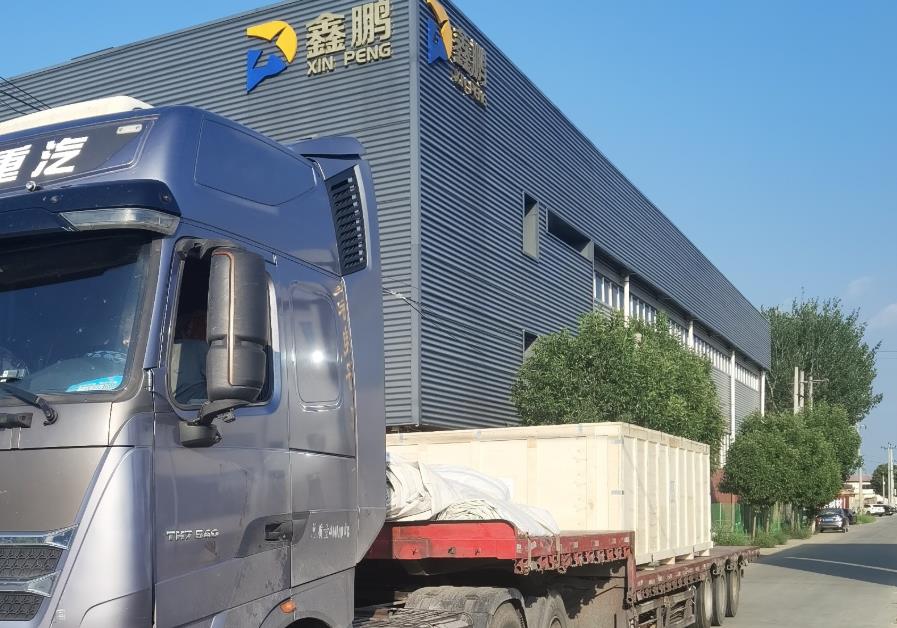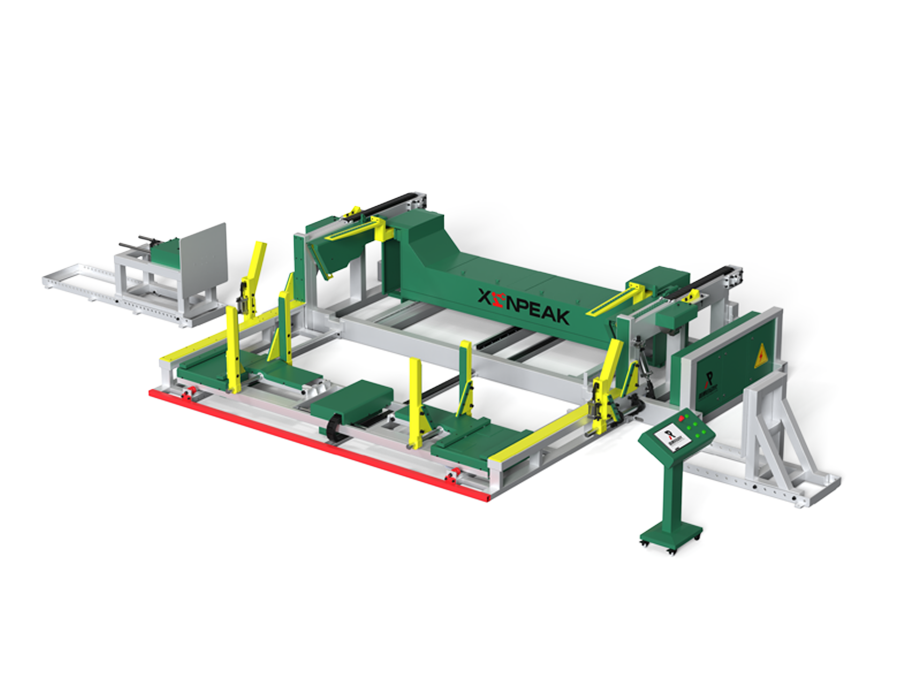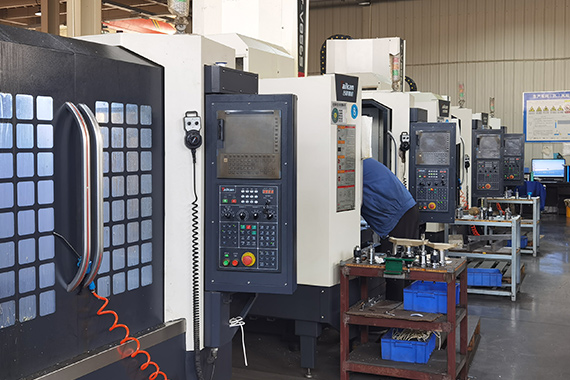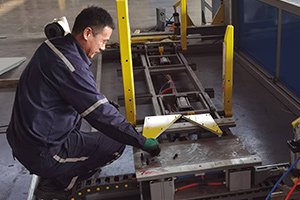Online
How to maintain steel pipe palletizer
2025-07-31
Maintaining a steel pipe palletizer is crucial to ensuring efficient and stable operation, extending its service life, and reducing failure rates. The following provides a systematic maintenance plan encompassing four key areas: daily maintenance, scheduled maintenance, specialized maintenance of key components, and environmental and safety maintenance.
I. Daily Maintenance: Preventing Problems
1. Cleaning and Dust Removal
Equipment Surface: After each day's operation, use a dry cloth or vacuum cleaner to clean dust, oil, and steel pipe residue from the equipment surface to prevent dust accumulation from affecting sensor accuracy or corroding metal components.
Critical Areas: Focus on cleaning the gripping mechanism (e.g., grippers, suction cups), vision sensor lens, and guide rails to prevent impurities from interfering with gripping or positioning.
Example: A company's failure to promptly clean the vision sensor lens resulted in a 15% increase in palletizing position deviation. Regular cleaning restored the deviation to normal.
2. Lubrication and Rust Prevention
Moving Parts: Apply a specialized lubricant (e.g., lithium-based grease) to moving parts, such as guide rails, chains, and gears, weekly to reduce wear and prevent rust. Metal-to-metal contact surfaces: In humid environments, spray rust inhibitor on all metal-to-metal contact surfaces, paying particular attention to exposed, unpainted parts.
3. Fastener Inspection
Daily check bolts and nuts for looseness, especially on load-bearing parts such as grippers, drive shafts, and brackets, to prevent them from falling out due to vibration.
II. Regular Maintenance: In-depth Care and Performance Optimization
1. Monthly Maintenance Plan
Hydraulic System: Check the hydraulic oil level and quality. If the oil becomes cloudy or contains impurities, replace it promptly (usually every six months).
Electrical System: Clean dust from the control cabinet, check the terminals for looseness or oxidation, and use a multimeter to check voltage stability.
Drive Components: Check the tension of belts and chains and adjust them to the specified range (e.g., belt tension must comply with the equipment manual).
2. Quarterly Maintenance Plan
Key Component Replacement: Replace wearing parts such as seals, filters, and brake pads based on frequency of use to prevent leakage or brake failure due to aging. Mechanical Structure Calibration: Check the parallelism and verticality of the palletizing arm, using a laser alignment tool to adjust to an error of ≤0.5mm to ensure stable palletizing.
Software Upgrade: Contact the manufacturer to obtain the latest control program, fix known vulnerabilities, and optimize motion algorithms (e.g., increase gripping speed or reduce energy consumption).
3. Annual Maintenance
Comprehensive Disassembly Inspection: Disassemble core components such as the reducer and motor, clean internal oil and dirt, and replace bearing grease.
Load Test: Simulate full-load operation for 24 hours, monitor equipment temperature rise, vibration, and noise, and assess overall performance degradation.
Safety Function Verification: Test the response time of the emergency stop button, safety light curtain, and protective door to ensure compliance with safety standards.
III. Specialized Maintenance of Key Components: Precision Maintenance
1. Gripper Maintenance
Gripper: Inspect the gripper surface for wear. If scratches or deformation are present, replace or repair (e.g., by overlay welding) promptly.
Suction Cup: Clean the suction cup surface and inspect for leaks. If leaks are detected, replace the seal or the entire suction cup. Magnets: Demagnetize the electromagnets (every two years) to prevent residual magnetism from affecting the release of the steel pipe.
2. Sensor Maintenance
Vision Sensors: Clean the lens regularly and calibrate parameters (such as focus distance and exposure time) to ensure image clarity.
Position Sensors: Check whether the distance between the sensor and the target is within the effective range (for example, the detection distance of a proximity switch must be ≤5mm).
Weight Sensors: Calibrate the sensor accuracy using standard weights, with an error of ≤±0.5% to prevent damage from overloading.
3. Electrical System Maintenance
Cable Inspection: Inspect the cable sheath for damage or aging, focusing on areas with frequent bending (such as joints in the robotic arm).
Ground Test: Use a ground resistance tester to check the equipment's ground resistance and ensure it is ≤4Ω to prevent leakage.
Lightning Protection: Check the status indicator of the lightning arrester. If it indicates a fault, replace it immediately to prevent lightning damage to the control board. IV. Environmental and Safety Maintenance: Ensuring Operating Conditions
1. Environmental Control
Temperature and Humidity: Maintain a workshop temperature between 5°C and 40°C, with a relative humidity ≤85% to prevent freezing of the hydraulic system or short circuits in electrical components.
Dust Control: Install air filtration in dusty workshops or equip equipment with dust covers to reduce dust ingress.
Corrosion Protection: Avoid operation in acid mist or salt mist environments, or use stainless steel equipment with an anti-corrosion coating.
2. Safety Facility Inspection
Protective Devices: Daily inspect safety gratings, guardrails, and safety doors to ensure they are intact and free of obstructions or damage.
Warning Signs: Regularly replace blurred or detached warning signs (such as "High Voltage Danger" and "Do Not Touch") to enhance safety awareness.
Firefighting Equipment: Check that the pressure gauge on fire extinguishers is in the green zone and ensure that fire escape routes are unobstructed.
V. Maintenance Records and Data Analysis: Continuous Improvement
1. Establish Maintenance Files
Record the time, content, replaced parts, and maintenance personnel for each maintenance session to create a traceable equipment health record. Example: By analyzing maintenance records, it was discovered that a gripper mechanism wears out on average every three months. This led to optimization of the material or adjustment of usage frequency.
2. Fault Warning and Prevention
Combining equipment operating data (such as vibration frequency and temperature profiles) to establish a fault prediction model to proactively identify potential problems.
Case Study: By monitoring motor current fluctuations, a company detected bearing wear a week in advance, avoiding unexpected downtime and losses.
Related News
Steel pipe automatic palletizer shipped to Vietnam
Cangzhou Xinpeng Intelligent Equipment successfully developed a new steel pipe automatic palletizer
Cangzhou Xinpeng Intelligent Equipment: Using sheet metal and machining as wings to explore the new blue ocean of intelligent manufacturing
Xinpeng Electronics Chassis Manufacturing Promotes Industry Upgrading, Intelligent Warehousing and Transportation Systems Are Popular in the Market
Contact Us
You can contact us through the following four methods. We will reply to your inquiry within 2-8 hours after receiving it!
Call Us
Send Email
Leave a Message
Add WeChat or WhatsApp







